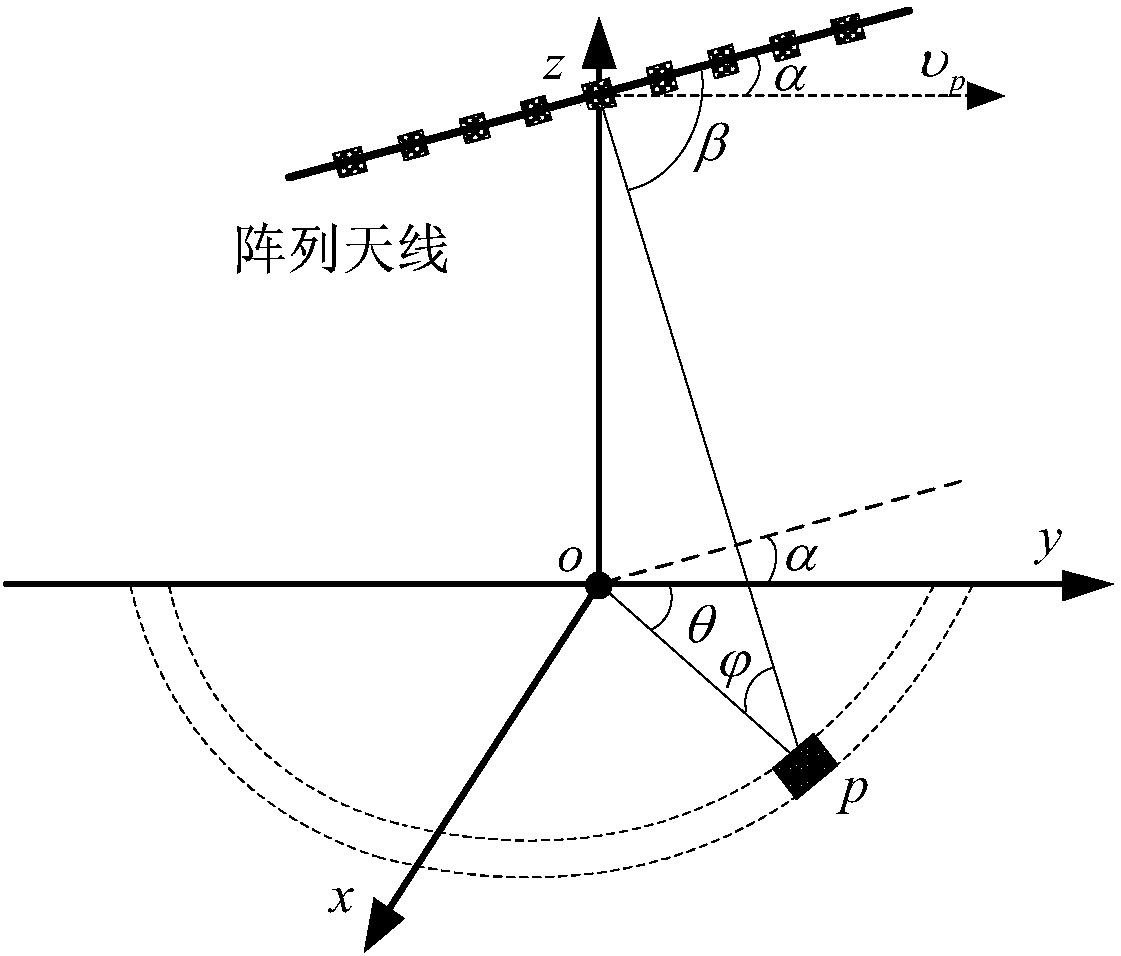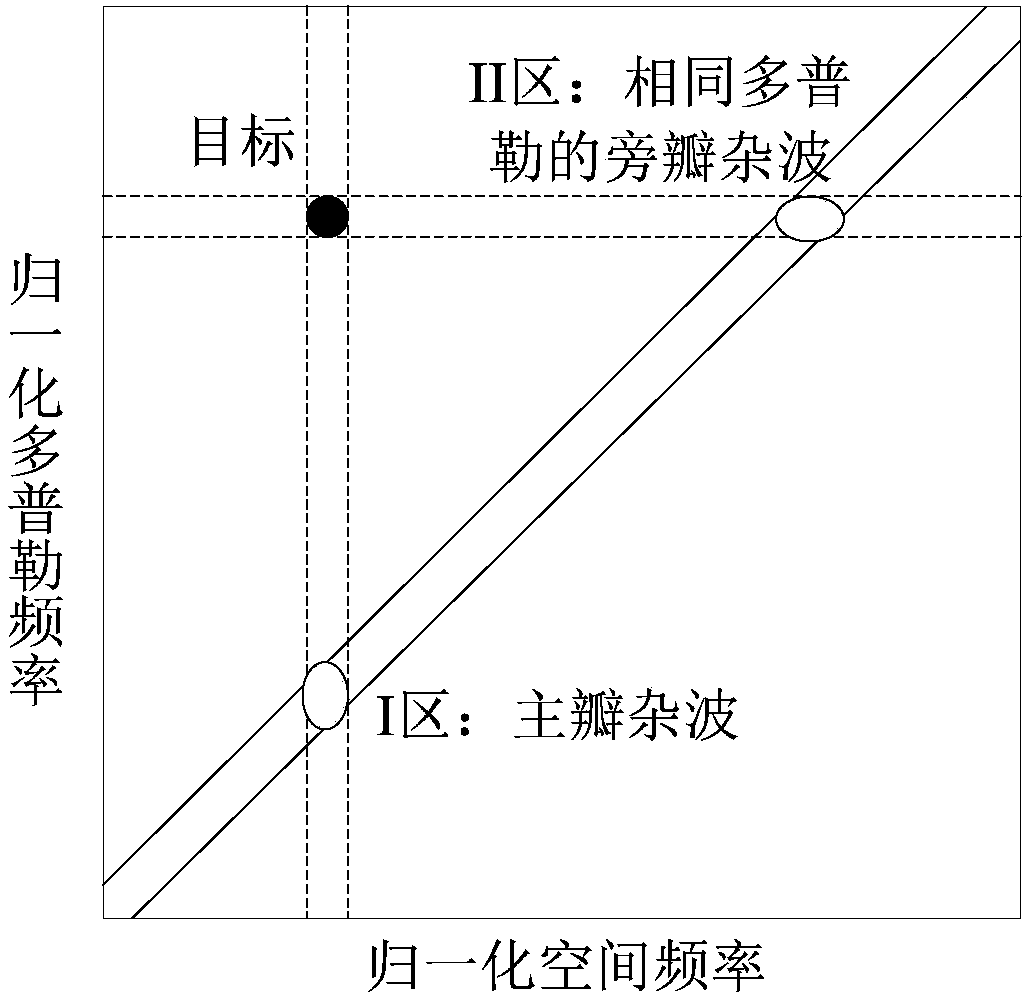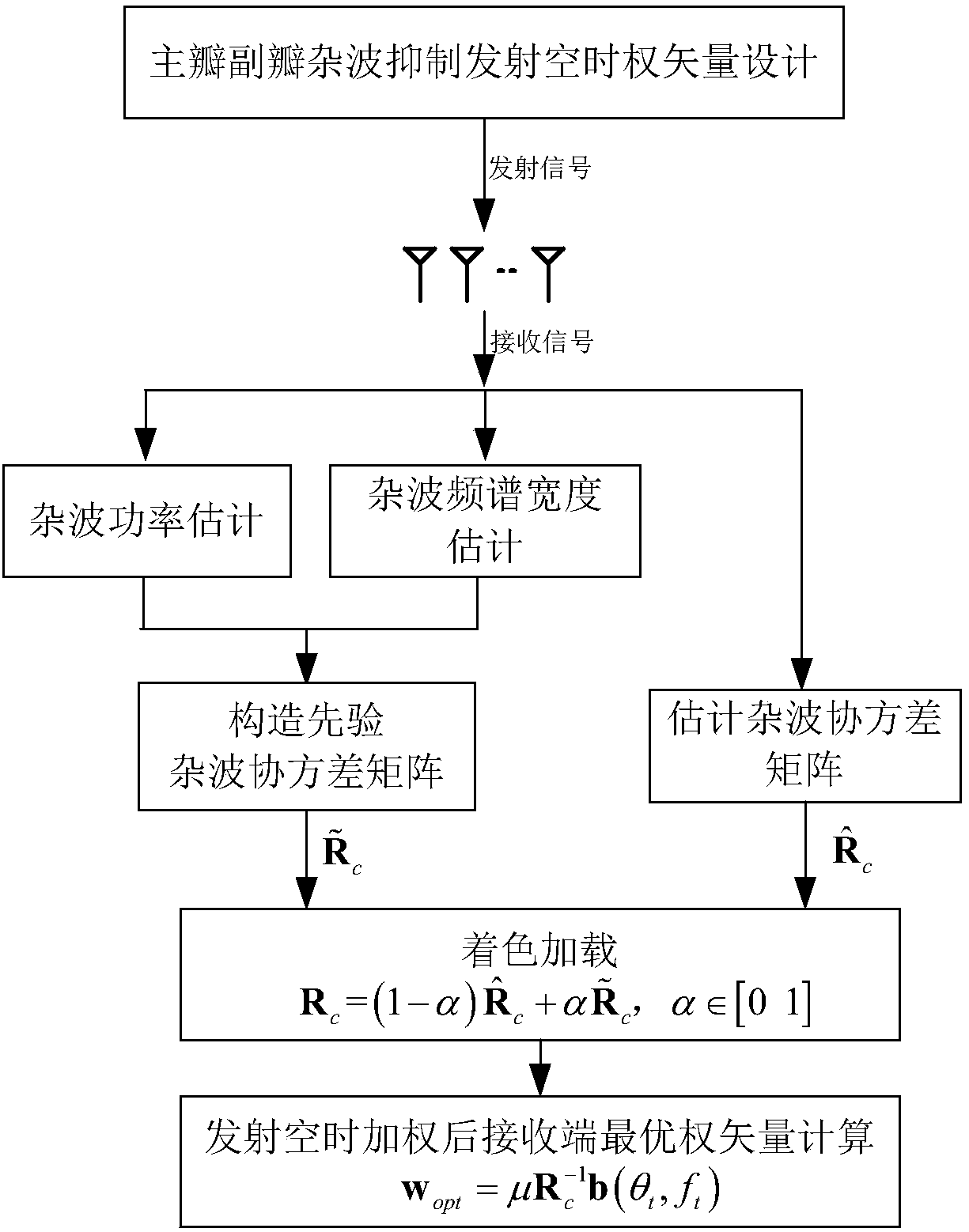Airborne radar clutter suppression method based on launching space-time weight optimization and KA-STAP
An airborne radar and clutter suppression technology, applied in radio wave measurement systems, instruments, etc., can solve problems such as algorithm performance degradation, clutter information loss, and difficulty in estimating the prior covariance matrix of receiving clutter
- Summary
- Abstract
- Description
- Claims
- Application Information
AI Technical Summary
Problems solved by technology
Method used
Image
Examples
Embodiment
[0138] It is assumed that the airborne radar system is a uniform linear array with 8 elements, and the distance between the elements is half a wavelength. Assuming that the transceiver arrays share the same uniform linear array, the number of pulses transmitted in one coherent processing interval is L=8. The normalized spatial frequency of the target is 0, and the signal-to-noise ratio SNR=0dB. The ideal clutter data is obtained by the equidistant ring integration method, and the inter-pulse fluctuation coefficient is obtained by using the preprocessed IPIX measured data (Adaptive Systems Lab.The McMaster IPIX radar sea clutterdatabase[OL].[2001].http: / / soma.ece .mcmaster.ca / ipix.) construction, the preprocessing low-pass filter passband frequency parameter is ω p =0.02, the stopband frequency parameter is ω s = ω p +0.006; ideal clutter-to-noise ratio CNR=25dB, a total of 800 clutter distance units are simulated.
[0139]When the normalized Doppler frequency of the target...
PUM
 Login to View More
Login to View More Abstract
Description
Claims
Application Information
 Login to View More
Login to View More - R&D
- Intellectual Property
- Life Sciences
- Materials
- Tech Scout
- Unparalleled Data Quality
- Higher Quality Content
- 60% Fewer Hallucinations
Browse by: Latest US Patents, China's latest patents, Technical Efficacy Thesaurus, Application Domain, Technology Topic, Popular Technical Reports.
© 2025 PatSnap. All rights reserved.Legal|Privacy policy|Modern Slavery Act Transparency Statement|Sitemap|About US| Contact US: help@patsnap.com



